People’s Park Complex being repainted red and white, but not specifically for SG60
Sign up now: Get ST's newsletters delivered to your inbox

People's Park Complex in Chinatown being repainted in red and white on May 20.
ST PHOTO: LIM YAOHUI
Follow topic:
SINGAPORE – Chinatown’s modernist icon People’s Park Complex, which is being studied for the possibility of conservation, will sport a fresh red-and-white look later in 2025.
The choice of colours has led some, including one of the building’s architects, Mr Koh Seow Chuan
But “the colour scheme was not specially chosen to mark SG60”, People’s Park Complex’s managing agent Claire Dixon-Lim told The Straits Times.
It “was recommended by a designer and approved by the building’s management council”, she said, adding that the facade rectification and repainting works are slated to end before the fourth quarter of 2025, depending on weather conditions.
Ms Dixon-Lim said the red-and-white scheme will be used on the building’s facade and inside the mall.
The mixed-use development, which was completed in 1973, was last repainted in 2009, when its then orange-and-green facade made way for a yellow-and-green coat that is currently being painted over.
It has to be repainted now as the existing paintwork would be affected by facade rectification works that are required.
In November 2024, the Building and Construction Authority told People’s Park Complex’s management to carry out a facade inspection and rectify defects.
Works were slated to take place from Dec 1, 2024, to Aug 15, Ms Dixon-Lim said in a letter to the development’s owners and occupiers in November 2024.
The 31-storey strata-titled complex is being studied by the Urban Redevelopment Authority
In February, the agency said it had completed a structural investigation of the building
The complex was one of the first mixed-use commercial and private residential developments in the region. It was also the largest shopping complex in Singapore when it opened and the first shopping complex in the country with atriums.
Pioneer Singaporean architects William Lim Tay Kheng Soon
Speaking to ST, Mr Koh said the building’s concrete facade was originally unpainted, with an off-form, fair-faced finish that was common in modernist buildings after World War II.
“Fair-faced concrete was in vogue after the war when most countries were poor,” he noted.
Non-profit heritage group Docomomo Singapore said in a paper on the complex that its fair-faced finish adhered to the modernist precept of “honest material expression”.
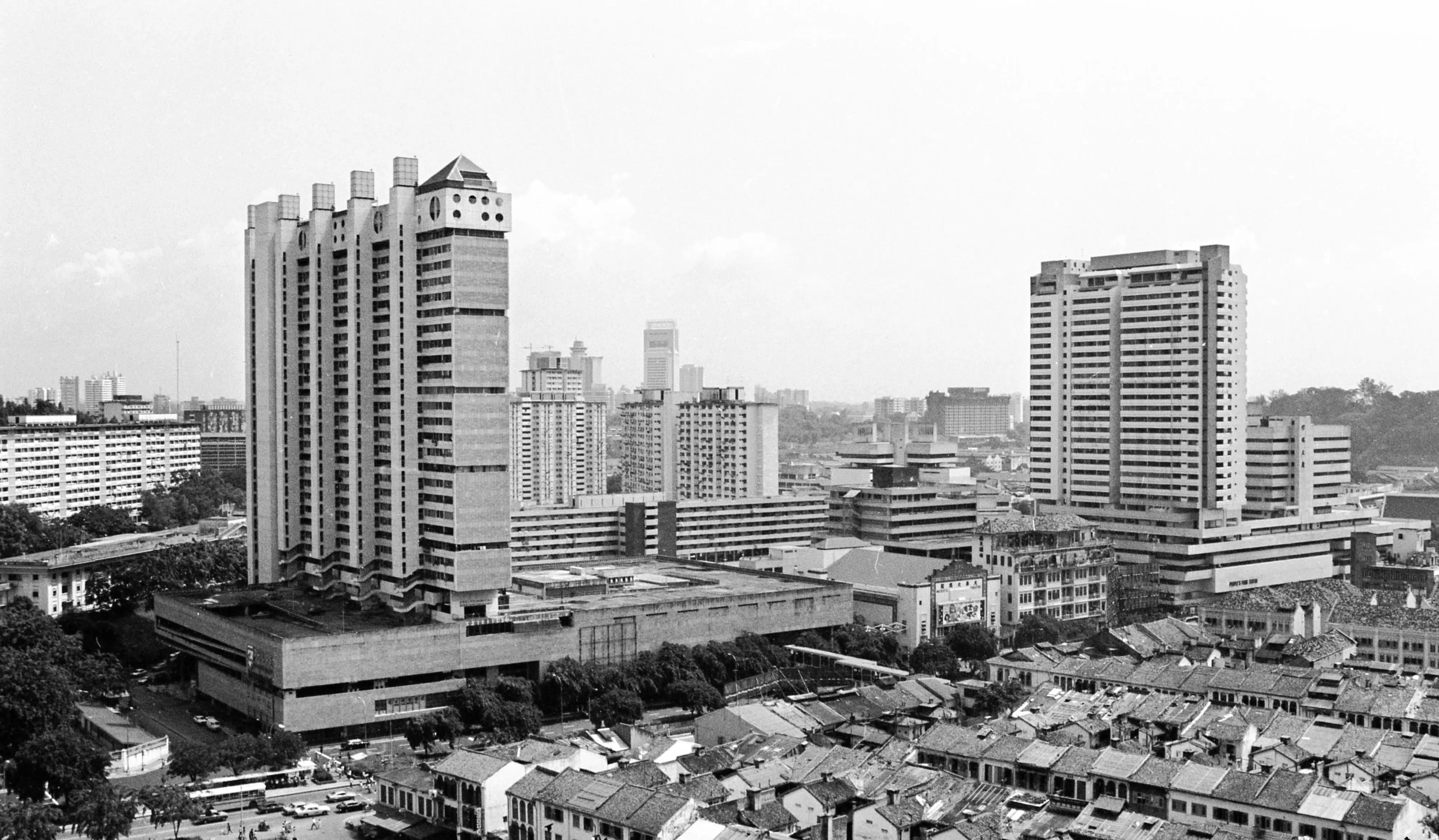
This black-and-white photograph from May 1979 shows People’s Park Complex’s fair-faced concrete facade, before it was painted.
PHOTO: ST FILE
Modernist architecture spanned roughly the 1930s to the 1980s, and includes styles such as Brutalism, which People’s Park Complex is associated with.
Generally, modernist architecture is linked to minimalism and emphasises function over ornamentation.
Mr Koh said the building was first painted in the late 1980s. Archival photos from the late 1980s and 1990s show that the complex had a largely beige colour scheme.
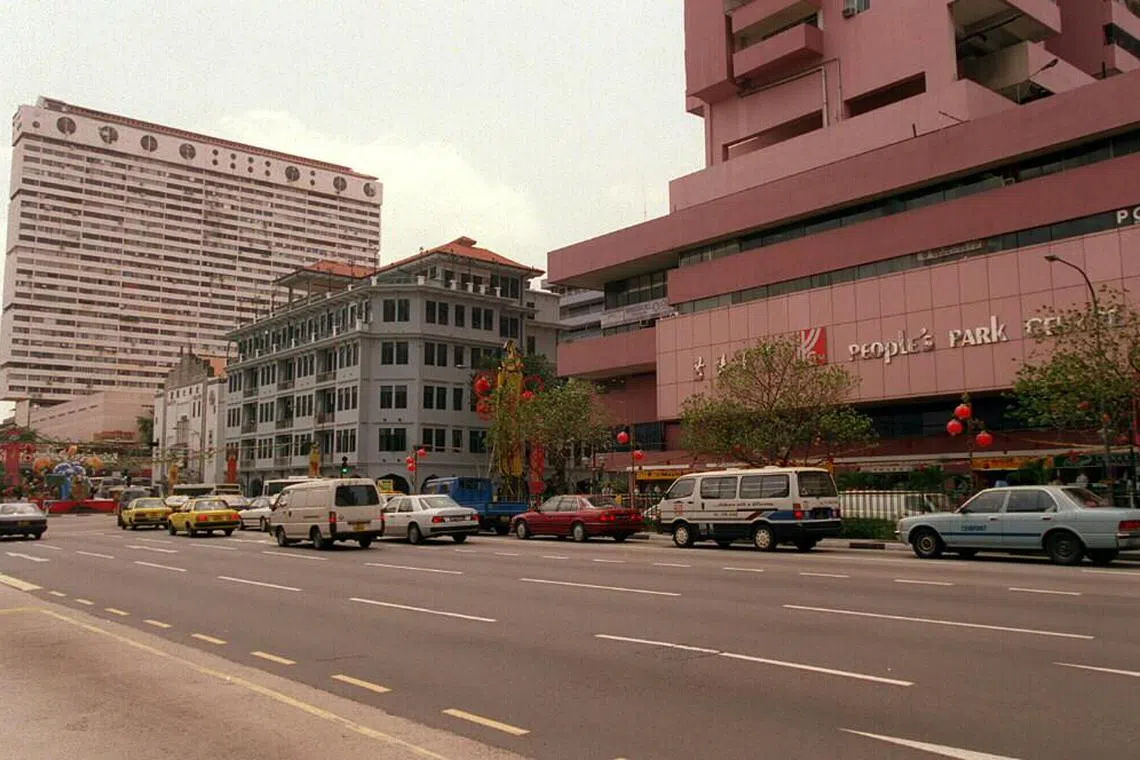
People’s Park Complex (left) in March 1996 with a beige-coloured facade.
PHOTO: TNP FILE
This was replaced by an orange-and-green scheme, most likely when the building underwent a $15 million facelift that started in 1998.
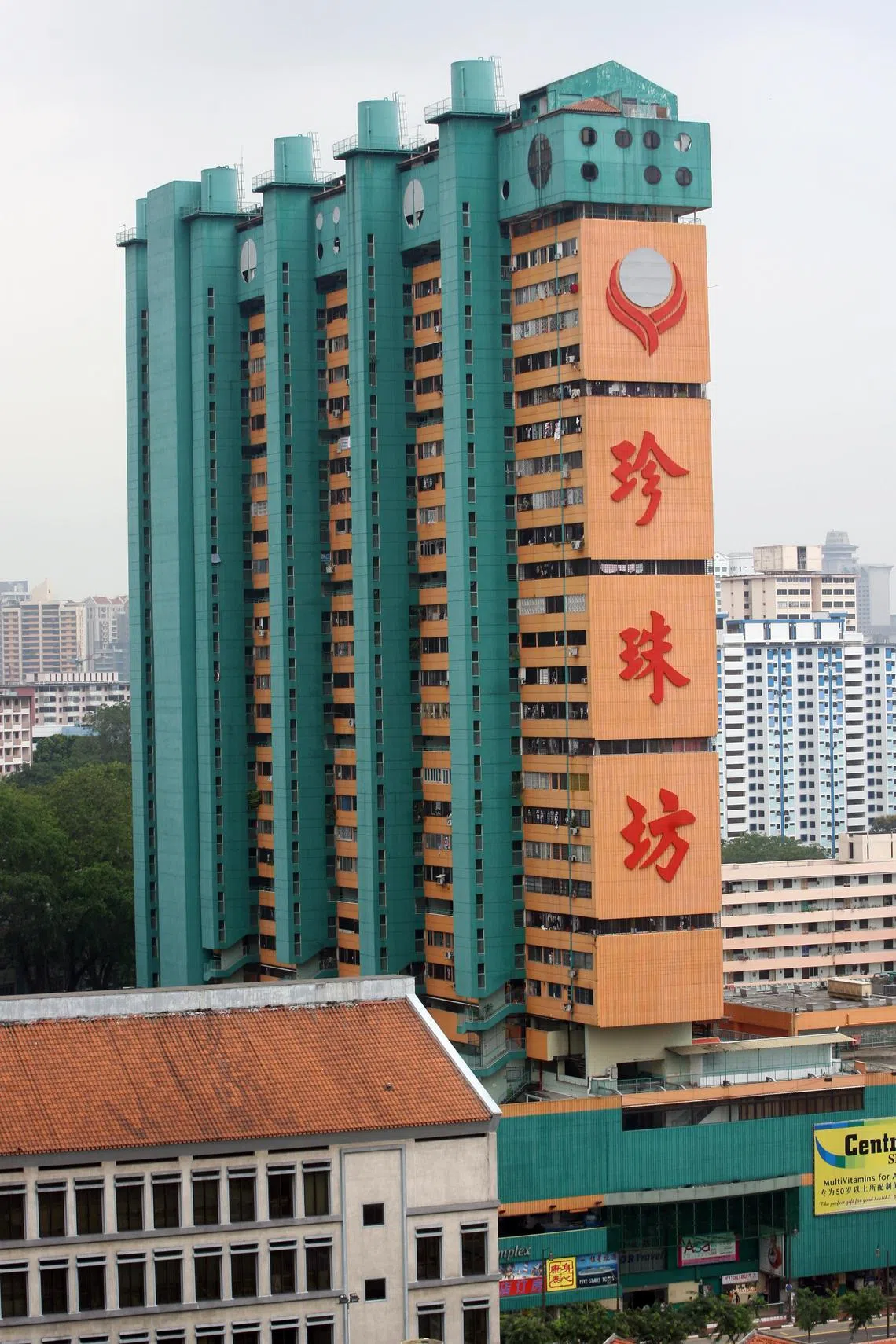
People’s Park Complex, with the Chinese characters zhen zhu fang, or Pearl Square, on its facade, pictured in March 2007 with an orange-and-green paint scheme.
PHOTO: LIANHE ZAOBAO
The Chinese characters zhen zhu fang, or “Pearl Square”, were added to the facade, presumably during these works – a nod to the building’s location at the foot of Pearl’s Hill.
The hill was named after Captain James Pearl, who commanded the Indiana – the ship which brought Sir Stamford Raffles, modern Singapore’s founder, to the island in 1819.
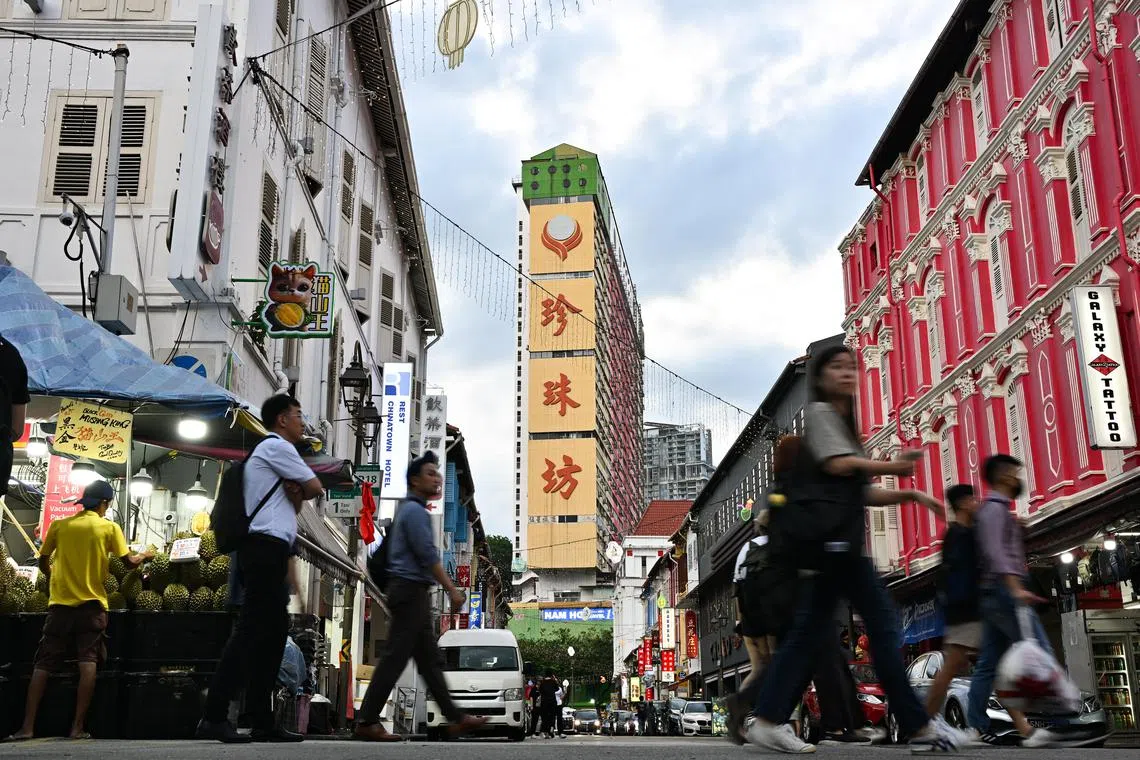
The Chinese characters zhen zhu fang, or Pearl Square, on the facade of People’s Park Complex are often photographed from Temple Street in Chinatown.
ST PHOTO: LIM YAOHUI
In 2009, the building was again repainted – this time, in a brighter yellow-and-green scheme.
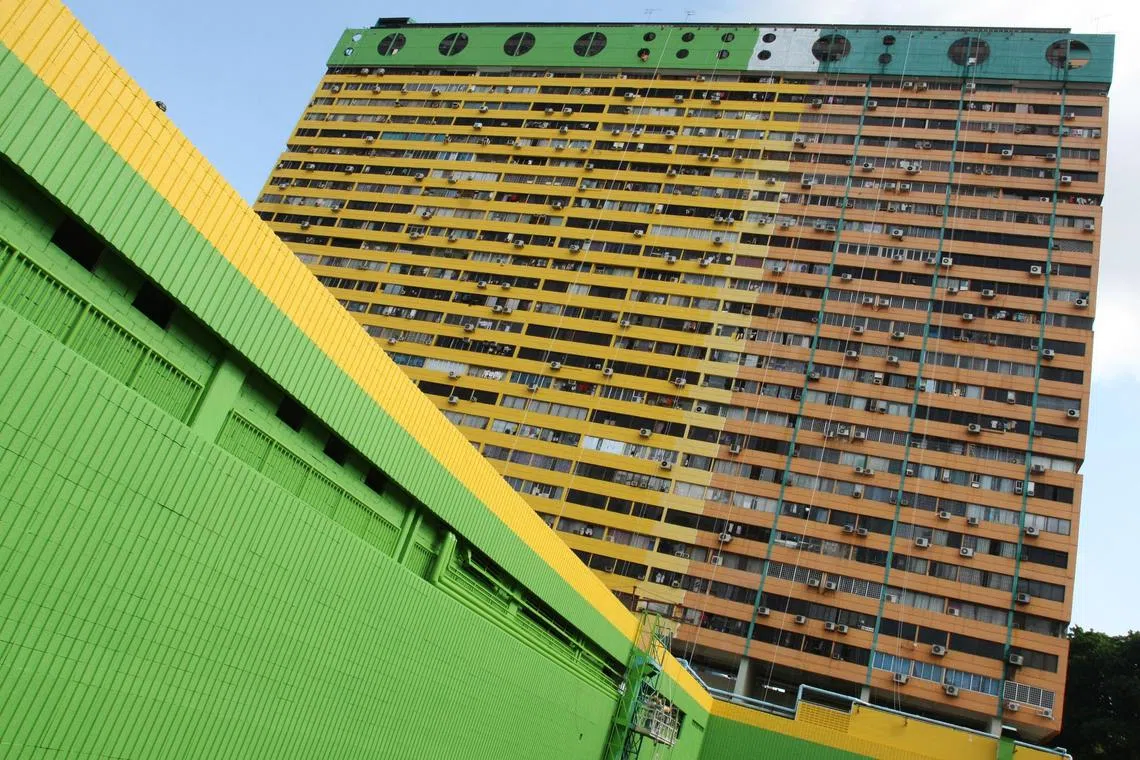
People’s Park Complex undergoing repainting in May 2009, when the orange-and-green facade (right) made way for a yellow-and-green scheme (left).
PHOTO: ST FILE
It is this yellow-and-green scheme that is now being replaced with a red-and-white coat.

Repainting works in progress at People’s Park Complex, captured on May 20.
ST PHOTO: LIM YAOHUI
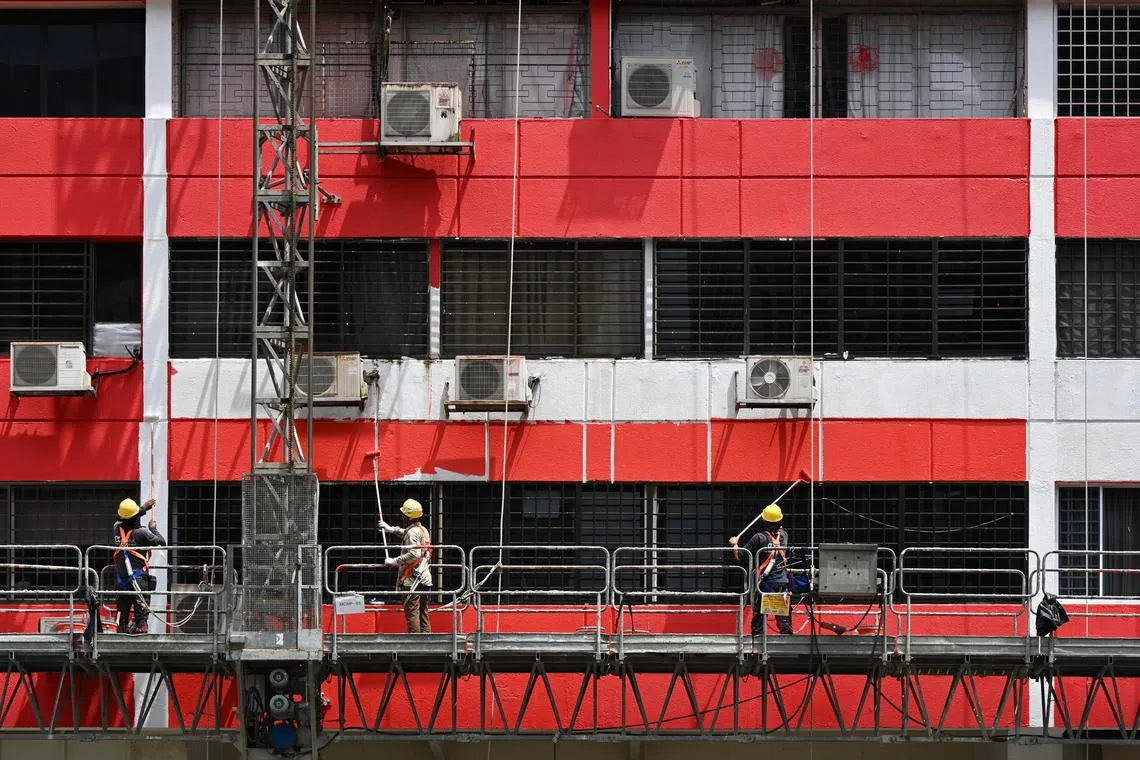
Painters giving a new hue to People’s Park Complex on May 20.
ST PHOTO: LIM YAOHUI
Architectural photographer Darren Soh, who has posted photos of the repainting works since early April, said he feels that the bright red being used is a very polarising colour, adding that “you either love it or you don’t”.
“Everything and everyone around People’s Park Complex will now have a red hue when light is shining brightly on its facade,” Mr Soh said.
Ng Keng Gene is a correspondent at The Straits Times, reporting on issues relating to land use, urban planning and heritage.


